A question came into Ask Gardenerd this week:
“Hi!, In my garden my cabbage is being infested with these white bugs that
look like they fly….I have taken out a couple of my plants that look
destroyed but still have more in the ground, also my Brussels sprouts
have them too! I have used spinosad organic killer and I am concerned
it will get on my other crops…..what do you recommend?? Thank
You!!! Jill”
You’re not alone Jill. Many people have experienced the same infestation. It sounds like you either have aphids (the most likely choice) or white flies. Let’s look at both:
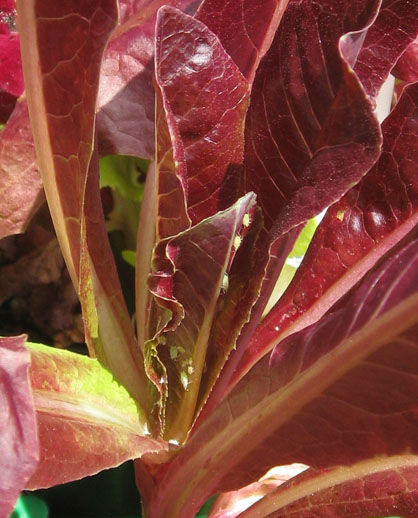
Aphids on lettuce
Aphids – these critters come in all colors, including gray, black, green and even red. Some have wings, others don’t. They are often transported by ants, who eat the “honeydew” that aphids excrete. Yum! They are sucking insects, meaning that they feed on the sap of plants., leaving them weaker.
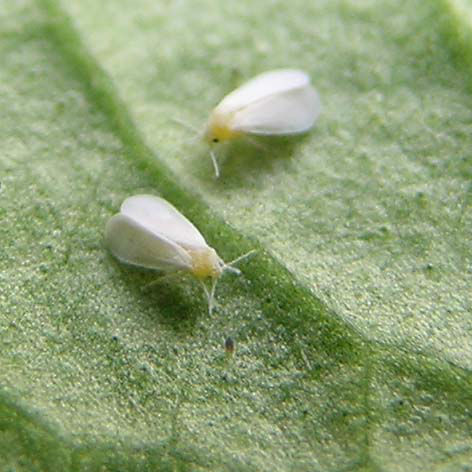
Image courtesy of Wikipedia
White Flies – these winged creatures also suck the life out of plants, but they go a step further by injecting a toxin into the plant as they feast. The honeydew they excrete can induce mold, which further weakens the plant.
The thing is that both of these insects show up with the plant is weak to begin with (or overcrowded). So what to do?
The first thing I recommend is to feed your plants. Give them a side dressing of compost, or better yet, worm castings – which contain an enzyme that works to dissolve the exoskeleton of soft-bodied insects – and water with compost tea or kelp emulsion.
Aphids typically show up at the end of the growing season to finish off plants, especially in warm weather. I typically grow my brassicas (that’s the family name for broccoli, cauliflower, cabbage, kale, kohlrabi, etc.) in fall. They tend to thrive in cooler weather and rarely get infested with aphids in those conditions.
Getting rid of them – Spinosad is not typically used to treat aphids or white flies, but smothering sprays like horticultural oils are. Neem Oil, or canola oil-based products like Concern help smother and suffocate the insects. Soap-based sprays
basically wash off their protective layers and expose them to the elements.
Natural Predators – ladybugs, lacewings and parasitic wasps are your friend. You can buy small containers of ladybugs and lacewings at many nurseries. Parasitic wasps are tiny, gnat-like insects that lay their young inside aphids, making them a host for more parasitic wasps. Plant alyssum and other “umbels” likeyarrow, and let your parsley, celery, cilantro and carrots go to seed – they are also umbels.
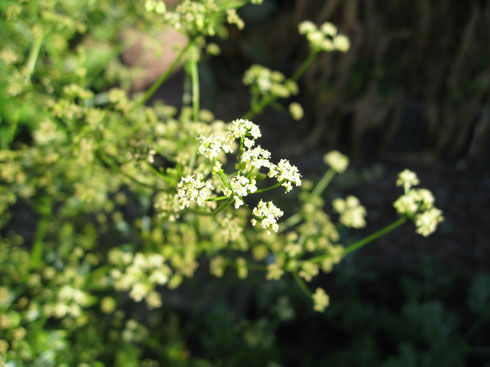
Celery gone to seed – flowers attract parasitic wasps.
Having flowers in your garden helps keep the balance on bugs. We let calendula, cosmos, and a host of other beneficial flowers volunteer in the garden each year and we have very few pest problems. The big guns (sprays) sit on the shelf most of the time.
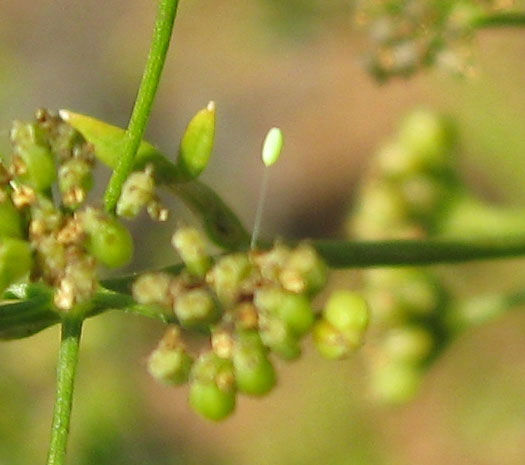
Lacewing egg on celery seed
I hope this helps, and thanks for writing in.
Fellow gardenerds – if you have a homemade solution to aphids, share it with us here!

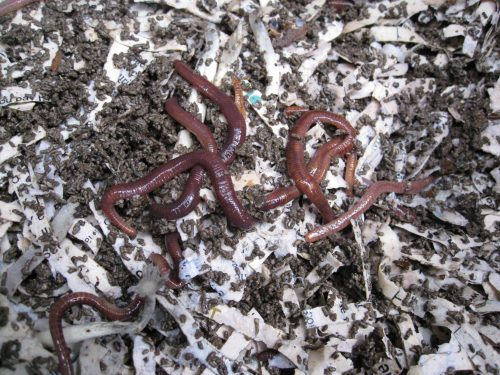
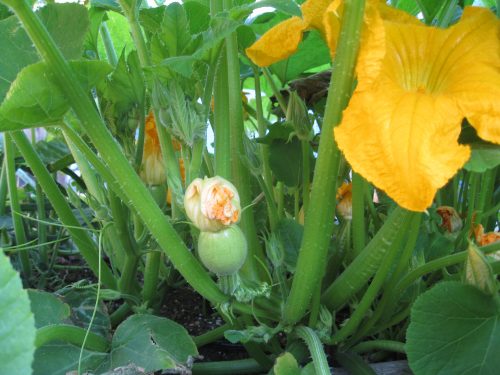
Pingback: Organic Pest Control - Gardenerd